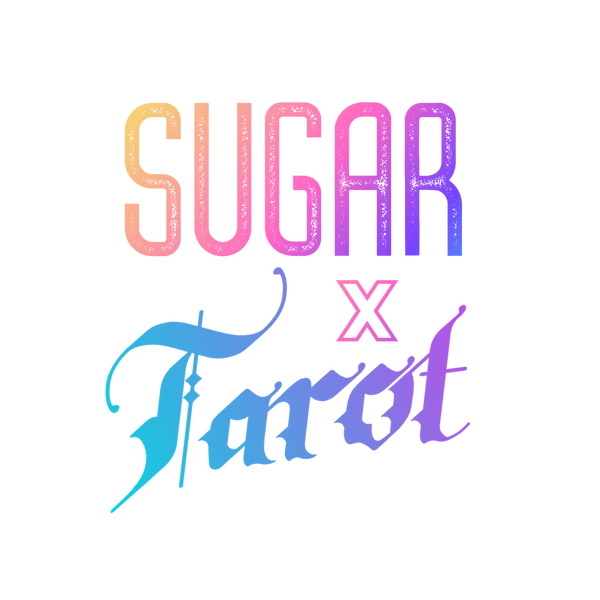A Journey Into Tarot: History, Symbols, and Discussing the “Scary” Cards
So, what is Tarot?
Tarot is a deck of 78 cards. Each card contains symbolic imagery, inviting the reader to explore their intuition and life circumstances. While it’s often associated with mystical practices and divination, Tarot’s purpose is more profound—it’s a tool for self-discovery, personal reflection and can even be used to gain insight (including that of the spiritual kind).
The History of Tarot
The exact origins of Tarot are still debated, but most historians trace the deck’s roots to 15th-century Italy. Originally used for playing a card game called "Tarocchi," Tarot was only later adopted for divination and mystical purposes in the 18th century. During this time, occultists began linking the cards with esoteric concepts like astrology, numerology, and alchemy.
One of the most influential Tarot decks, still widely used today, is the Rider-Waite-Smith Tarot Deck, which was published in 1909. This deck was created by Pamela Colman Smith, under the direction of scholar Arthur Edward Waite.
Pamela Colman Smith’s Contribution to Tarot Imagery
Pamela Colman Smith revolutionised Tarot’s visual language by illustrating the entire deck (both Major and Minor Arcana cards), with rich, symbolic scenes. Prior to her work, most Tarot decks only illustrated the Major Arcana cards, whilst the Minor Arcana cards featured only simple symbols like numbers and suits. Her artwork gave every card a narrative, helping readers interpret the meanings more intuitively.
Her depictions of iconic cards like The Fool, The Magician, and The Lovers are still widely recognised, and her vibrant, accessible illustrations have shaped the way modern readers interact with Tarot.
The Major Arcana: The Fool's Journey
The Tarot deck is divided into two parts: the Major Arcana and the Minor Arcana.
The Major Arcana contains 22 cards, each representing significant life events, spiritual lessons, or archetypes. These cards include The Magician, The Empress, The Devil, and others.
The journey of these cards is often referred to as the Fool’s Journey - a symbolic path of growth and discovery. The Fool begins as an innocent character, setting out into the world, and encounters various archetypes that teach life’s profound lessons. Along the way, the Fool evolves, gaining wisdom and insight into the nature of life, love, challenge, and transformation.
Some Key Major Arcana Cards:
- The Fool: Innocence, new beginnings, and potential.
- The Magician: Power, manifestation, and willpower.
- The Empress: Fertility, abundance, and nurturing energy.
- The Devil: Bondage, temptation, and illusion (not evil, but a reminder of personal limitations).
- Death: Transformation and endings (often misinterpreted, this card signifies change and rebirth, not literal death).
- The Tower: Sudden upheaval and chaos (though shocking, this card represents the breakdown of false structures and eventual clarity).
The Minor Arcana: Life’s Everyday Lessons
The Minor Arcana consists of 56 cards, divided into four suits: Wands, Swords, Cups, and Pentacles. These cards represent the day-to-day challenges, emotions, and situations we encounter.
- Wands: Represents action, ambition, creativity, energy, passion, forward movement, and personal power. It is the element of Fire.
- Swords: Represents intellect, communication, thought, clarity, conflict, challenges, decisions, and truth. It is the element of Air.
- Cups: Represents emotions, love, relationships, intuition, connections, inner feelings, and spirituality. It is the element of Water.
- Pentacles: Represents material concerns, finances, career, business, stability, home life, prosperity, and the physical world. It is the element of Earth.
Each suit has 14 cards (Ace through 10, and four court cards: Page, Knight, Queen, and King), each with its unique meaning and significance in daily life.
Facing “Scary” Cards: Death and The Tower
Two of the most misunderstood cards in Tarot are Death and The Tower. While they may appear intimidating, these cards are not to be feared.
- Death: Far from representing literal death, this card speaks of transformation, the end of a cycle, and the beginning of something new. It's about closing one chapter and starting another, a reminder that endings make way for growth.
- The Tower: This card represents sudden change and upheaval, often showing us that the structures we have built (relationships, careers, or beliefs) are unstable. While the process may feel chaotic, it clears away illusions and helps you rebuild stronger foundations.
How Tarot Can Help You
Tarot is a powerful tool for personal insight and guidance. Here’s how it can help:
- Self-reflection: Tarot encourages you to reflect on your thoughts, emotions, and circumstances. The cards act as a mirror, showing you what you need to consider in your life.
- Clarifying Decisions: Stuck in a decision? Tarot can help clarify options, showing the potential outcomes of various choices and illuminating aspects you may not have considered.
- Spiritual Growth: For many, Tarot is a tool for spiritual exploration. The imagery and archetypes in the cards help you connect with deeper aspects of yourself.
- Healing: Tarot can offer comfort and support during difficult times, providing perspective on emotional challenges or life transitions.
Tarot is a wonderful tool that can be used for self-discovery and self-transformation. Whether you’re new to Tarot or seasoned in its practice, the cards offer endless opportunities for reflection, growth, and wisdom. Tarot can be used to explore the future, but it’s really about understanding the present, facing reality and aligning yourself with your higher path.
If you would like a personal Tarot reading with Chelle, you can book here.
